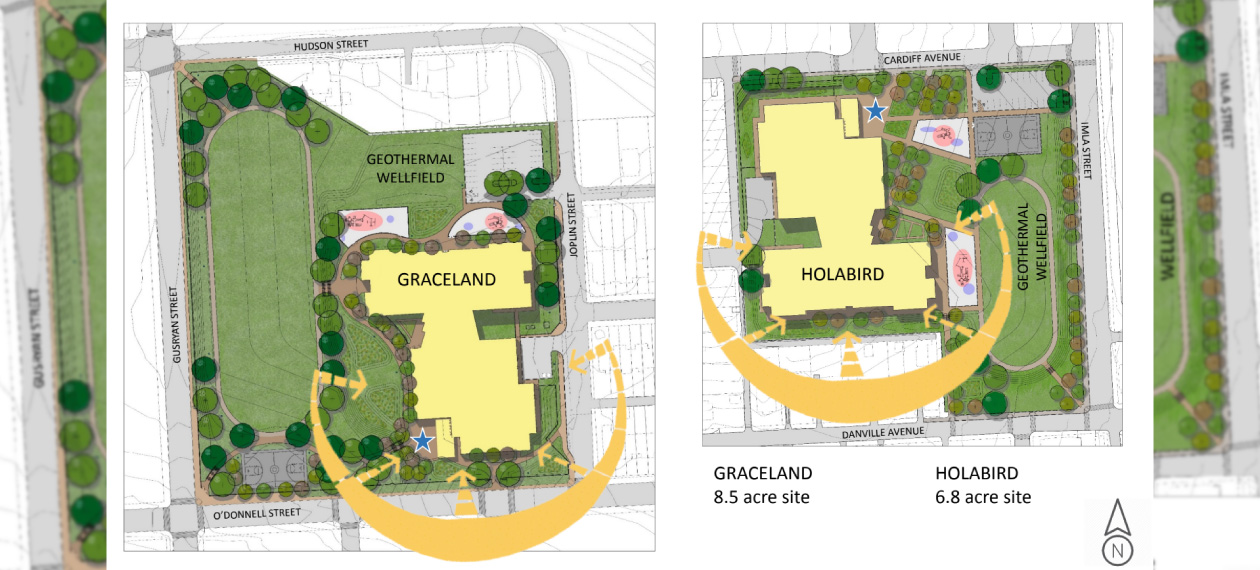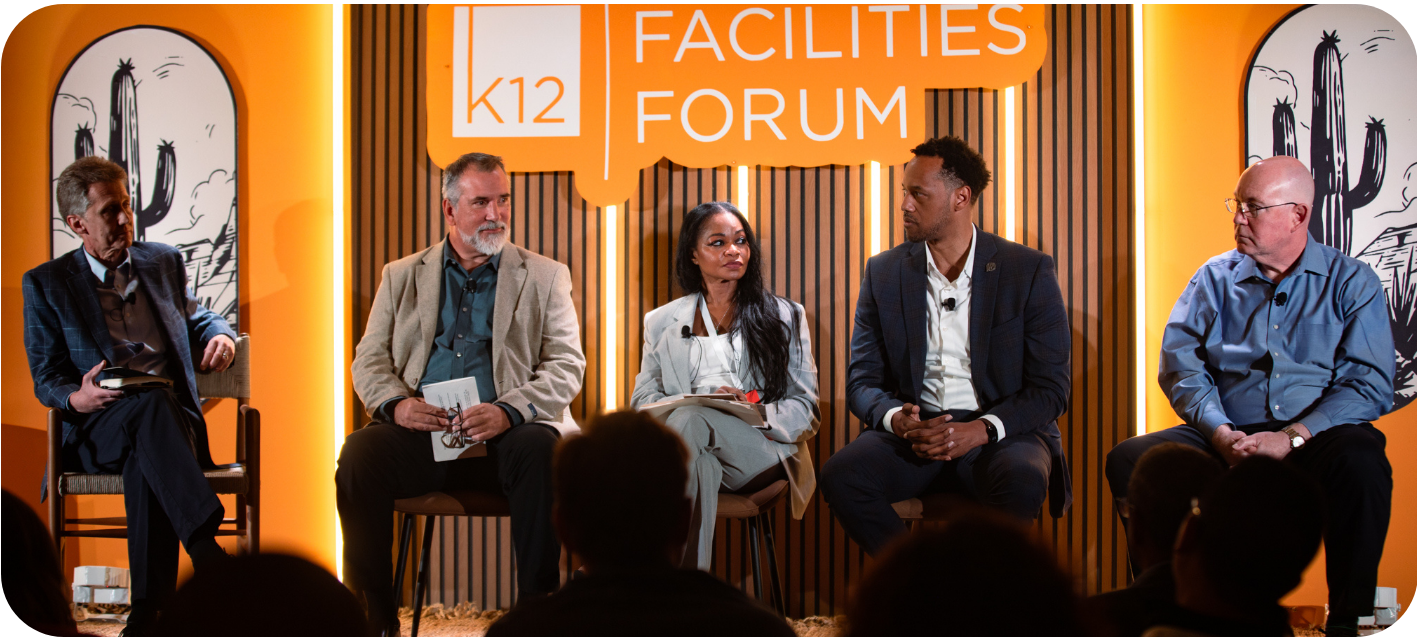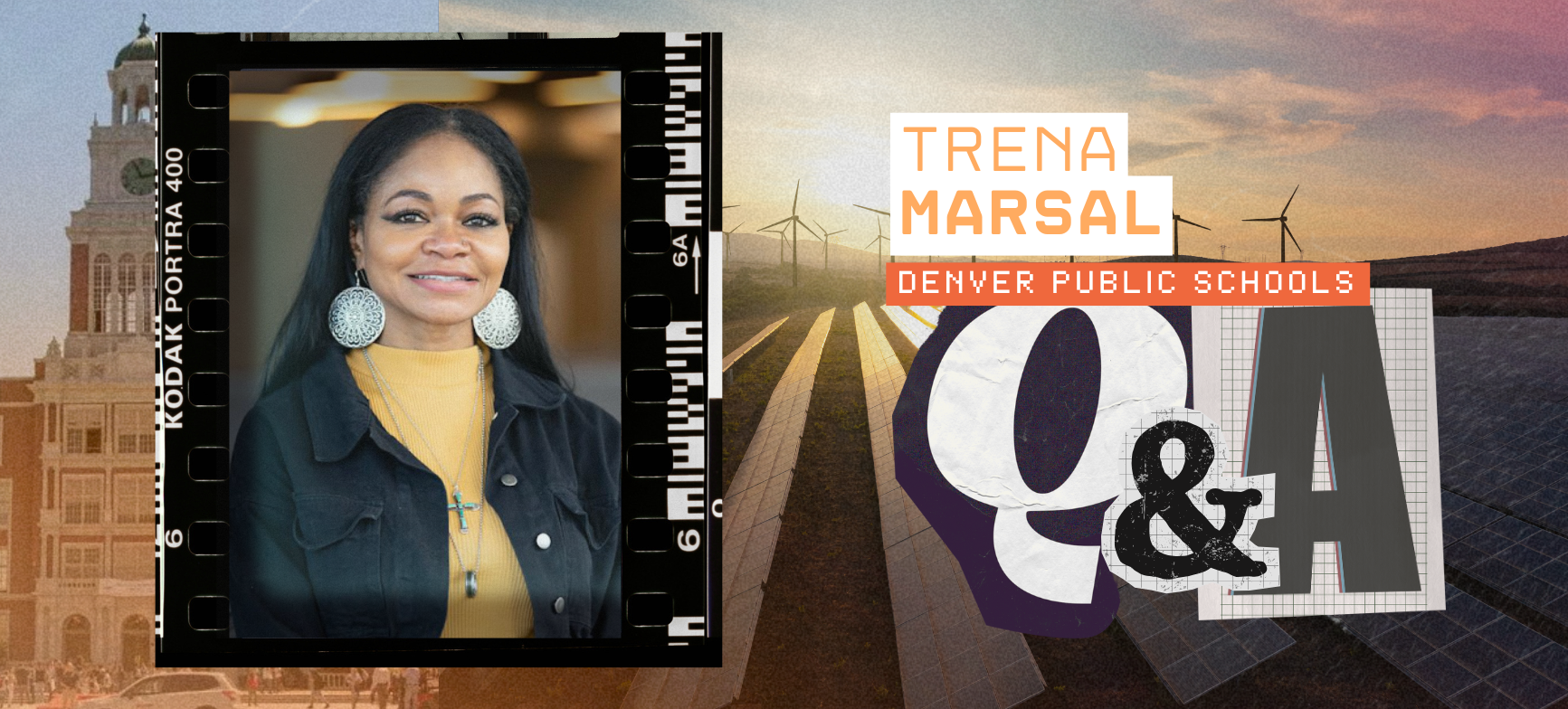When Graceland Park-O’Donnell Heights Elementary/Middle School and Holabird Academy opened in September 2020, their socially distanced ribbon-cutting ceremonies marked the end of a long journey – or, really, a new beginning. The pre-K to 8th grade schools were almost a decade in the making, and, given the ongoing pandemic, wouldn’t be fully attended until the following year. Still, they represented an important milestone in a long-underfunded school district: Baltimore City Public Schools’ first net zero school buildings, the second and third in Maryland overall.
In a recent presentation at the K-12 Facilities Forum, Cynthia Smith, Director of Facilities Design and Construction at Baltimore City Public Schools, explained what it took to build Graceland and Holabird, what makes them special, and what other school districts can learn from them.
“We're really excited about them,” she said of the LEED Platinum buildings. “And we really want to encourage this to happen in other districts, urban or not, across the country.”
“Everyone Was Confident in the Systems We Put in These Buildings.”
Designed by Grimm and Parker Architecture, Holabird Academy and Graceland Park are identical 94,000-square-foot buildings (albeit at different orientations) with capacity for 604 students. The district applied for Maryland’s Net Zero Energy Schools Program almost ten years ago, receiving $2.7 million for Graceland ($533,000 for soft costs, $2.24 million for hard costs) and $2.4 million for Holabird ($177,760 for soft costs, $2.4 million for hard costs), supplementing other funding provided under the Maryland’s 21st Century Buildings Act.
Construction, managed by CBRE | Heery with general contractor CAM, began in 2018 and finished in 2020, with the schools finally reaching full occupancy in 2021. "When teachers were allowed to come back…every single teacher in both of these buildings came back," Smith said. "Everybody was confident in the systems we put in these buildings."
Those systems include 1,300 photovoltaic solar panels on each roof, geothermal HVAC, tubular daylighting, CO2 monitoring, demand-controlled ventilation, and an energy dashboard that provides live tracking of each building’s energy use. Then there are the insulating concrete forms (ICF) exterior envelope walls, which, along with the buildings’ low-leakage windows, help prevent energy loss.
But that’s not all they do. When a state official toured one of the buildings while it was still under construction, Smith recalled, he marveled at how the walls completely blocked out noise from a nearby interstate highway, even though the school was still roofless at the time.

Changing Behaviors
In terms of energy savings, both schools had lofty targets: 25 kBtu per square foot per year, from starting points of 106 (Graceland) and 82 (Holabird). "We're tracking about 21 right now, so we're even less than that," Smith said, adding that both buildings have given back to the grid.
Getting there was no easy task, however. It required both novel design solutions, like integrated freezer-coolers in the buildings' kitchens as opposed to separate units, and behavioral changes, like a ban on employees bringing in their own microwaves and mini-fridges (and a staffer dedicated to cutting the cords of repeat violators). “Simple things like that actually now have become our standard for the way of doing building construction,” she explained.
Occupant behavior is a critical part of getting to net zero, but thankfully the students and teachers at Graceland and Holabird were more than ready to adapt. “The students have been amazing, they've been so excited about this entire thing," Smith said. "They're also one of our biggest proponents, as we go through the buildings, with making sure that the teachers are doing what they're supposed to be doing.”
The building doubles as a teaching tool, engaging students further by providing hands-on lessons about energy use and solar power.
Importantly, the building doubles as a teaching tool, engaging students further by providing hands-on lessons about energy use and solar power. There’s a weather station and garden on the roof, as well as windowed cutaways in the ICF walls, allowing students to see the insulation up close. “The school is not just a place you go to for education; it should also be a place where you can be educated using the building itself,” Smith explained.

Must-Haves and Lessons Learned
Reflecting on what she learned from the long process of building and opening Holabird and Graceland, Smith stressed the importance of assembling a good team. While Grimm & Parker had never designed a net zero school, she said, their subcontractor CMTA Engineers were "net zero gurus" who kept everything on track and everyone on the same page.
Another must-have is solar panels, even though these will likely require some trade-offs – like devoting indoor spaces to mechanical equipment that would otherwise take up valuable solar real estate on the roof. Related is the importance of detailed building envelope design, one that prevents leakage without sacrificing indoor air quality or daylight. Holabird and Graceland have plenty of windows, Smith pointed out, but pressure tests revealed the lowest leakage their testers had ever seen.
All things considered, Smith considers the efforts well worth it: the construction costs for each building came out to $358 per square foot for Graceland and $364 for Holabird, both less than or equal to the state average ($365) for new construction.
"Even with getting to net zero, we did it for the average cost," Smith concluded. "It did not cost us any more to do this, and it will cost us a heck of a lot less to operate the buildings as we go forward."

Posted by
Join us at the K12 Facilities Forum!
The community for district and facilities leaders
Nov 8-10, 2026 | San Antonio, TX









-3.png)

Comments